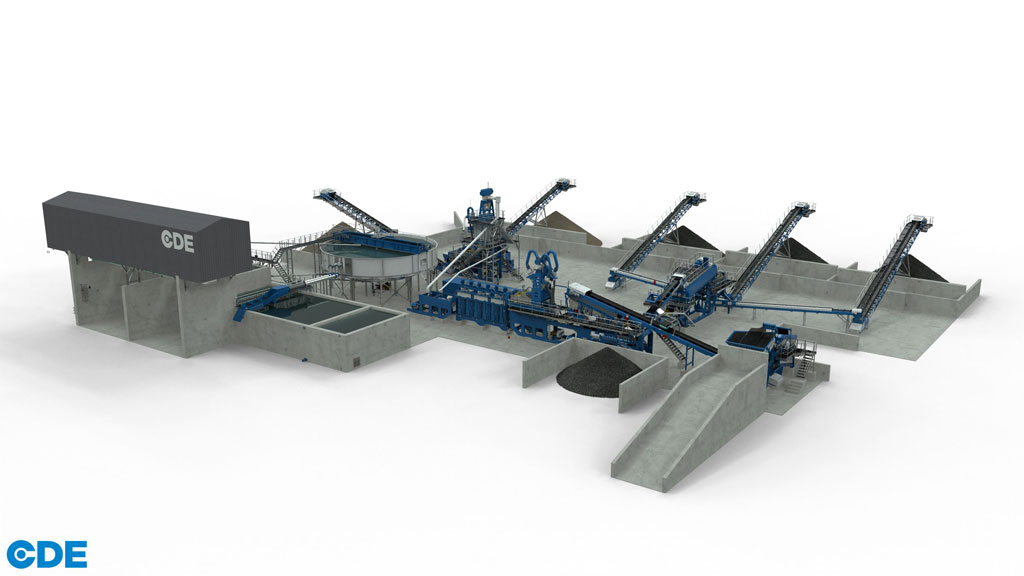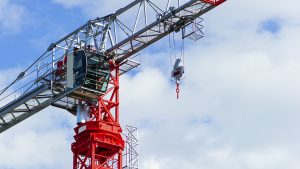By mid-summer, Calgary’s construction and demolition industry, looking to dispose of excavated soil, will have access to a new wet-process recycling facility, the first of its kind in Canada able to mine soils for reusable materials.
“It is going to be the third in North America,” said Travis Powell, who is spearheading the facility’s development and its ability to also handle both contaminated and excavated soil removed from sites. “There is a big opportunity here for industries like the construction industry to get away from conventional practices that are out of date.”
The new facility, estimated at a cost of $18.8 million, will use high-pressure water to wash excavation materials and recapture usable sand, rocks and aggregate to be used in construction projects.
Of the 600,000-tonne annual capacity, approximately 510,000 tons will be reused and kept from landfills.
“Our business is really from the foundation down,” said Powell, president of two of Calgary’s Indigenous owned companies, KLS Earthworks & Environmental and Calgary Aggregate Recycling (CAR).
The new plant will be located on CAR’s five-acre site on the southeast side of Calgary.
CAR is a concrete, asphalt and aggregate recycling facility and each year diverts 250,000 tons of concrete and 120,000 tons of asphalt out of landfill.
KLS Earthworks & Environmental is a demolition and excavation company with an affiliate trucking company KLS Hauling.
Powell said he hopes to have the new facility running by July operating at an hourly capacity of 250 tons and the large site provides the ability to stockpile an estimated 300,000 tons of material for processing during off season.
Powell said the need to expand into recycling soil existed for a number of reasons, including sustainability and operating more efficiently in the construction industry.
But CAR’s impetus into the expansion was prompted by Calgary landfill constraints.
While Calgary, unlike some other urban landfills, still takes excavated soils, the cost was soaring.
City landfills have tripled their tipping fees which rose to a height of $180, forcing excavation soil to be trucked outside to lower-cost landfills, he said. The result is a 300-kilometre round trip and truckers only able to make two loads a day.
Powell said CAR was able to apply and receive a grant under the provincial government’s Shovel-Ready Challenge (within the Emission Reduction Alberta program) and show that processing material locally would reduce trucking emissions, the impact on landfills, expedite the use of building sites and recoup useful construction components that normally would be trucked in from outside the city.CAR was awarded an $8.8 million provincial grant and contracted CDE Group to design the facility, using technology that is common in Europe and now breaking into the North American market.
The facility will have the capability to deal with Alberta Tier 1 contaminates in soils, a needed solution as industrial and commercial sites are redeveloped in larger urban areas. In Alberta, contaminated soils are the largest hazardous waste stream, accounting for approximately three million tonnes annually.
Powell sees the problem in dealing with contaminated soil at the new plant as an opportunity to rethink how these materials are handled and remediated.
“It makes no sense to dig it out of one hole and bury it in another,” he said.
One candidate site that is now being considered formerly housed a utility wood pole facility that used creosote for preservation. Other candidates can include gas stations and dry-cleaner sites.
The plant does have limitations, Powell said, and will not handle hazardous materials such as soils contaminated with asbestos.
Not all soils such as silt are a good fit with the washing process, while the ideal soil contains a mixture of sands, rocks and aggregate.
CDE Group is known for its international designs, manufacturers and installations of wet processing systems. The North American headquarters are located in Texas, said Adrian Convery, area business development manager for the group.
“We have about 2,000 installations worldwide,” he said.
The system utilizes vibrating screens of differing sizes that sort materials combined with high-pressure water which washes away soil silt and the remaining materials are directed towards stockpiles. Scrubbers are used to break up clay balls, leaving cleansed sand, aggregate and rocks. Convery said 97 per cent of the water is normally recaptured and reused but can be less if contaminates are floated off in the water.
Other CDE wet systems have been installed in B.C., Alberta and Eastern Canada but the Calgary installation is the first to offer both the handling of excavation soils and contaminated soils, said Convery.
Powell is not wading into unproven technology, as major U.S. construction group Posillico Inc. of Long Island and a leader in New York in public works projects, has used washing and remediation technology. It installed CDE Group’s first North American system to deal with contaminated soils.
The Posillico facility is considered one of the largest and most advanced contaminated soil washing facilities in the world, with a recovery rate of 90 per cent of material that is diverted from landfill.
As well as recapturing the usable materials in construction excavation and putting them back into the market, CDE said on its website it is extending the life of existing quarry sand, stone and aggregate reserves, many of which are being exhausted or illegally exploited.
According to CDE, the third largest international crime, behind counterfeiting, is the illegal mining of sand.











Recent Comments
comments for this post are closed